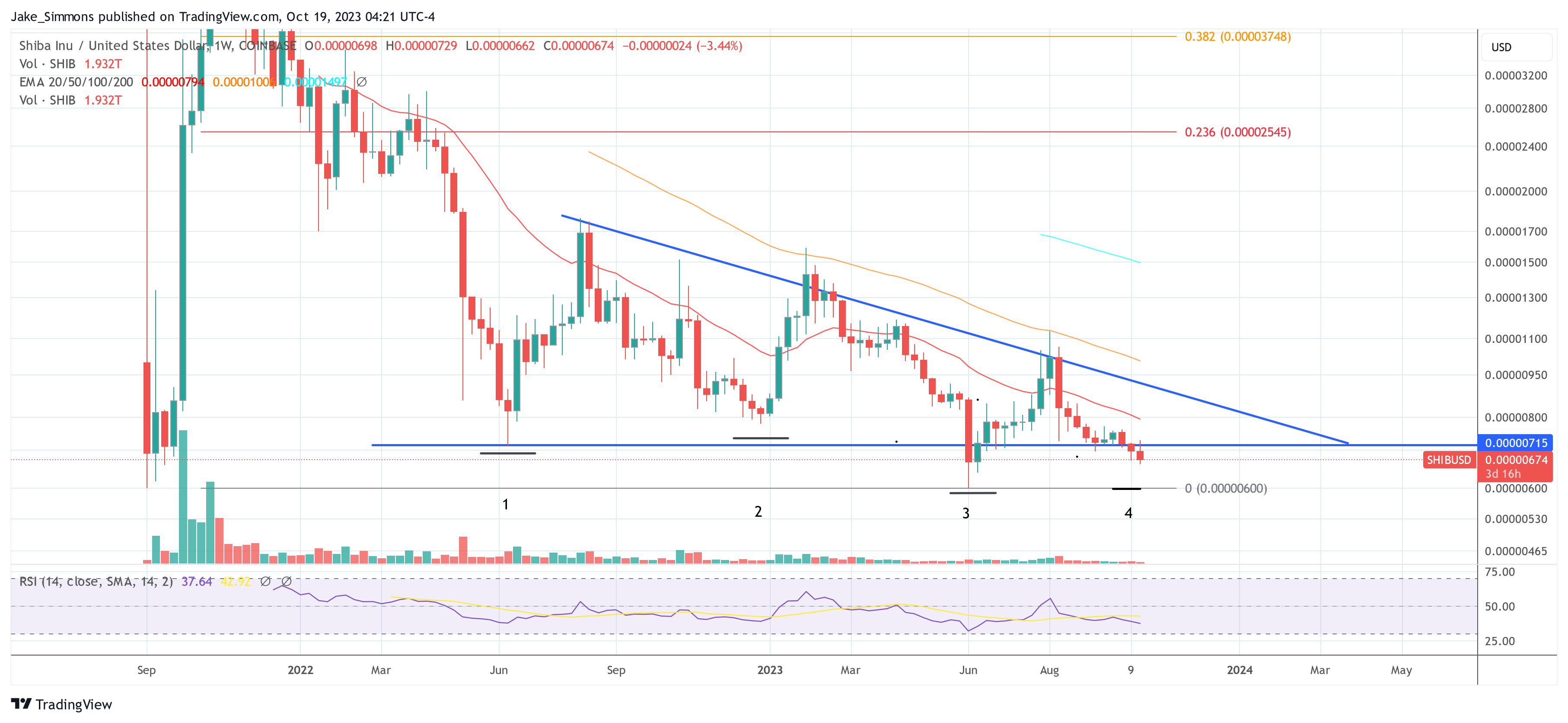- October 19, 2023
- Posted by: admin
- Category: BitCoin, Blockchain, Cryptocurrency, Investments
In a significant development for the Shiba Inu community, Shib CoOp, a Metaverse real estate project, announced the premiere SHIB token burn on Shibarium, marking a significant step forward for the Layer-2 (L2) blockchain network built atop Ethereum. With the launch of Shibarium over two months ago, the platform is designed to host a myriad of innovative decentralized applications (dapps), potentially amplifying the amount of SHIB burns.
Yesterday’s inaugural SHIB burn through an application, hence, solidifies Shibarium’s promise and potential. Shib CoOp tweeted: “Another first on Shibarium. Shib CoOp 1st to Burn SHIB on Shibarium. 97 Million SHIB. Wondering when Shibburn Tracker will be able to track these burn transactions?”
The burn can be validated by Shibariumscan, the blockchain explorer dedicated to the Shibarium network, which shows that the burn took place yesterday at exactly 12:32 (UTC). However, it seems that this move might not have the intended effect on the token’s circulating supply.
Shibburn, the community-led burn tracker, swiftly responded to the claim, highlighting that such burns on L2 do not directly affect SHIB’s total supply on Ethereum, the Layer-1 (L1) network where Shiba Inu’s original contract resides.
As Shibburn succinctly explained: “If you burn a token like $SHIB on an L2 chain, you are not actually burning the original token on the L1 chain. Instead, you are burning a different token on the L2 chain. The bridged token is a representation of the original token, but it is not the original token itself.”
Confusion About Shiba Inu (SHIB) Burns
The underlying challenge arises from the disparity between L1 and L2 networks. Ethereum is the foundational L1 network, whereas Shibarium functions as an L2 network built atop Ethereum. Thus, burning Shiba Inu on Shibarium does not mean that equivalent SHIB tokens are destroyed on Ethereum.
To impact the token’s actual supply, the burn would need to occur on Ethereum. Shibburn firmly stressed this point: “We can’t say those tokens were actually removed/burnt from the total supply in L1.”
However, some in the SHIB community argue that the primary goal is to remove these tokens from circulation, regardless of the layer on which it’s executed. One user remarked, “I’m no expert, but the goal is to take this out of circulation. Whether L1 or L2 is irrelevant.”
The intricacies of bridging tokens further complicate the situation. When tokens are bridged from L1 to L2, L1 tokens are housed in a specific contract, while corresponding L2 tokens are minted. If a burn occurs on the L2, it does not signify the destruction of the original L1 tokens. Instead, what gets sent to the burn wallet on L2 are merely those newly minted L2 tokens.
In a bid to further cement their stance, Shibburn noted a precedent: “The Ethereum team set up the burn addresses for that specific purpose. If you send any token there, it registers the contract it came from. We can’t regard tokens as ‘burnt’ unless they’re from the same contract.”
Neither Shiba Inu’s development team nor marketing lead Lucie have commented on the issue at press time. An inquiry to Shibburn whether the developers need to develop a bridge to “sync” the SHIB burns from L2 to L1 has also not been answered.
At press time, Shiba Inu was trading at $0.00000674 and remained below the neckline of the descending triangle at $0.00000715.
